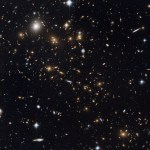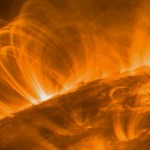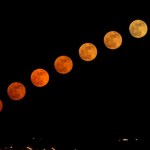spectrum
"Twinkle, twinkle, quasi-star
Biggest puzzle from afar
How unlike the other ones
Brighter than a billion suns
Twinkle, twinkle, quasi-star
How I wonder what you are." -George Gamow
The Big Bang is one of the greatest, revolutionary ideas in all of modern science, but it's also one of the most successful ideas as far as making predictions that have aligned with our observations of the Universe. Despite all of that, there are a whole bunch of people who'll read this (and more who won't) who aren't sure that the Big Bang is correct. Some people, in fact, don't even understand the definition…
"On what can we now place our hopes of solving the many riddles which still exist as to the origin and composition of cosmic rays?" -Victor Francis Hess
We've come a tremendously long way in our understanding of the Universe, but there are plenty of mysteries still to be revealed. Way back in the late 1800s, we noticed that there was an unaccounted-for excess in the amount of ionization in the upper atmosphere, something that our Sun and Earth, by themselves, couldn't explain.
Victor Francis Hess -- the originator of the quote atop -- decided to go see for himself, and conducted a series of…
"The sun is a mass of incandescent gas
A gigantic nuclear furnace
Where hydrogen is built into helium
At a temperature of millions of degrees" -They Might Be Giants
It's so ingrained in us that the Sun is a nuclear furnace powered by hydrogen atoms fusing into heavier elements that it's difficult to remember that, just 100 years ago, we didn't even know what the Sun was made out of!
Image credit: Landscape Photography by Barney Delaney.
The conventional wisdom at the time, believe it or not, was that the Sun was made out of pretty much the same elements that the Earth is! Although that…
"As far as we can discern, the sole purpose of human existence is to kindle a light in the darkness of mere being." -Carl Jung
During the daytime, light is plentiful and abundant, and the majority of our waking lives are optimized for that. But more and more of us are active late into the dark hours, when -- as Owen Pallett (formerly Final Fantasy) would tell us -- the last of
Your Light is Spent.
Unfortunately for us, our bodies are accustomed to certain types of light during the day, and expect a different type of night at light.
Image credit: TableTop Studio Ltd or LLC.
Because…
Yes, green laser pointers are cool. Especially when you use them to make stuff fluoresce. Ok, what about a blue laser pointer? They are getting surprisingly cheap (Amazon has a 10 mW for pretty cheap). Still not cheap enough for me. But, you know what? Some of the physics majors here at Southeastern Louisiana University purchased a couple of these. Physics major Daniel let me borrow his.
First, they don't look too bright. This is probably because our eyes are not too sensitive to this wavelength. The blue 10 mW does not look anywhere near as bright as the 5 mW green that I used in…
I am not sure if First Excited State posted this as a blog entry, but it was mentioned on twitter. Question: why are sparks blue? My first gut response was that this is the blackbody color. Wrong for several reasons. The short answer is that sparks are blue because of the colors given off from nitrogen and oxygen when they are excited.
In order to make this post longer than necessary, let me say something about blackbodies. A blackbody is an object that emits radiation due only to it's temperature. Since it does not reflect anything, it looks black at room temperatures. You can make a…
Nothing gets past you, does it? A scientific paper came out earlier this week, and I took a look at it, sighed, and Jamie asked me, "What?" And I said to her, "When I see bad science, it just makes me a little bit frustrated and sad." Of course, I had no intention to write about it.
But then Starts With A Bang reader Matt emailed me, and writes the following about this press release that he had seen:
You have two explanations for these gravitational waves now and that much I understand. But they make it sound as if symmetry breaking and inflation are competing theories. They aren't, right? Do…
The closest you're going to get from me on Valentine's Day is something red, dear readers. As the Moon is now a waxing gibbous and will be for the next week, it will brighten the sky for the majority of the night. But before sunrise, it will dip below the horizon and set. The funny thing is, if you've ever watched this (or watched a waning gibbous rise), you'll notice it changes color! In fact, this composite photo shows you what I'm talking about:
So the Moon, although white once it gets high up into the sky, appears yellow, orange, or even red when it's close to the horizon. I got a…
tags: researchblogging.org, blue feathers, Tyndall scattering, Rayleigh light scattering, schemochromes, white feathers
A pair of hyacinthine macaws, Anodorhynchus hyacinthinus.
Image: The Guardian.
Most avian plumage colors are the result of different types of pigments that are deposited into feathers while they are regrowing after moult. However, pigments alone do not produce all avian feather colors. Blues, such as those seen in hyacinthine macaws, Anodorhynchus hyacinthinus, and white, such as the snowy color of Bali mynahs, Leucopsar rothschildi, typically result from small changes…




